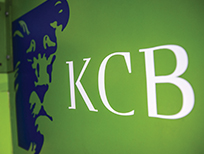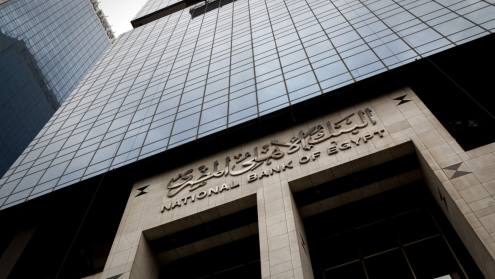It comes as little surprise that Kenya dominated the mergers and acquisition (M&A) landscape within the African banking sector in 2019. Of the eight deals listed in sub-Saharan Africa by Mergermarket, three involved the merging or acquiring of a Kenyan lender, with a fourth seeing a Kenyan-based lender making an acquisition in the Democratic Republic of Congo.
As a banking market, Kenya represents both the challenges and opportunities facing lenders and would-be investors across much of Africa. Its economy is the fourth largest in sub-Saharan Africa, according to the World Bank, with the International Monetary Fund forecasting a 6% growth in gross domestic product in 2020.
The country’s banking sector is well capitalised and largely profitable, and while credit growth was sluggish for much of 2019, this is set to change considerably this year and beyond, following the removal of a lending rate cap – imposed by the government in 2016 – in late 2019.
Under pressure
Yet significant parts of Kenya’s banking sector remain under pressure, given the persistence of problem loans. The non-performing loan (NPL) ratio of Kenya’s listed banks rose to 9.8% at the end of September 2019, compared with a five-year average of 8.2%, according to Nairobi-based Cytonn Investments. This was primarily caused by exposure to bad debt in the real estate, manufacturing and retail sectors.
“If the asset deterioration trend persists, this will likely impact banks’ bottom line due to the associated impairment charges, especially after the adoption of the new IFRS 9 standard [in 2018],” said the firm in its December update on the banking sector.
Coupled with this trend is the fact that Kenya, as is the case with many markets in sub-Saharan Africa, is significantly overbanked. The country had 40 commercial lenders as of the end of 2018, according to central bank data, with 75% of banking assets controlled by just 10 lenders.
Such pressures began to tell, particularly in 2019, with more lenders becoming targets of M&A moves than in 2018 and 2017 combined. The deal activity took the form of strategic mergers among near equals, as well as the mopping up of smaller, troubled rivals by the market’s largest lenders. This trend shows no sign of stopping going into 2020.
“We expect more consolidation in the banking sector, as the relatively weaker banks that probably do not serve a niche become acquired by the larger counterparts who have expertise in deposit mobilisation, or serve a niche in the market,” said Cytonn in its December report.
“Consolidation will also likely happen as entities form strategic partnerships, or as they navigate the relatively tougher operating environment that is exacerbated by the stiff competition among the various players in the banking sector.”
NCBA merger
The merger of Commercial Bank of Africa (CBA) and NIC Group was Kenya’s biggest banking deal of 2019, and one of the most significant across Africa throughout the year.
The transaction, approved by the shareholders of both banks in April 2019, involved a share swap where CBA shareholders exchanged their shares for 53% of the new shares in NIC Group, with NIC’s shareholders owning the remaining 47%.
The merger, which received central bank approval in September, has created one of Kenya’s largest banks by assets, rebranded under the new name of NCBA. The merger also ties together the two banks’ assets in Tanzania, Rwanda and Uganda.
Moody’s estimates the newly merged entity – which has more than 40 million customers on its books – has a market share of about 9% to 10% of system assets in Kenya.
KCB’s buying spree
While the merger of CBA and NIC marked the coming together of two similarly sized lenders (ranked 8th and 10th, respectively, in terms of assets at the end of 2018, according to The Banker Database), the country’s other main acquisition – that of National Bank of Kenya (NBK) by KCB – saw Kenya’s largest lender by assets acquiring a rival that was not only significantly smaller, but in considerably worse financial health.
The acquisition of NBK followed several years of struggle at the lender, whose largest shareholders were Kenya’s National Social Security Fund and the National Treasury, owning 48% and 23% stakes, respectively.
NBK, which had just a 2.6% market share in terms of assets at the end of 2018 (compared with KCB’s 14.1%), has struggled for several years with mounting bad debts and had been operating below the statutory minimum capital requirements, posting a 98% drop in 2018 profits. Attempts to prop up NBK by way of Ks20bn ($200m) in 2007 and a widely criticised rights issue in 2013 had failed to improve the bank’s finances.
KCB’s rescue acquisition received the blessing of the central bank in September, after the local courts dismissed a challenge by local politicians who were claiming that NBK should receive further state support.
In addition to its NBK acquisition, KCB has also acquired a portion of the loan book of Imperial Bank, which was placed in administration in October 2015. KCB had originally intended to acquire about Ks10bn of loans of the collapsed lender, but had subsequently revised down the portion it intended to buy to about Ks5bn.
Little problems
With larger banks continuing to benefit from their scale, the challenges facing Africa’s smaller banks are only set to increase, necessitating further consolidation, according to Moody’s Investor Service in a note on African banking for 2020, published in December.
“There are several institutions that are thinking of working towards consolidation and strengthening their business practices to be more resilient by working with others,” Kenyan central bank governor Patrick Njoroge told The Banker in 2019, declining to name the involved parties.
Yet while further consolidation in the sector is to be expected, deals such as the CBA/NIC merger may be hard to replicate within a reasonable timeframe, according to Dr Habil Olaka, CEO of the Kenya Bankers Association (KBA).
“Many banks will need to improve their core capital and capacity to have a fighting chance in a competitive market, putting pressure on the smaller ones to consolidate or find a capital injection,” he says.
“But with mergers there are always a number of hardware and software issues that aren’t easy to bring to bear,” he adds, noting that the CBA/NIC merger came after several years of discussions between the two institutions.
An alternative for banks would be to create strategic partnerships with other lenders around specific products without the need for a formal merger. Dr Olaka cites the example of Stawi, a credit lending platform for small enterprises launched by KBA and backed by five banks in late 2019.
Overseas interest
In addition to Kenya’s internal consolidation in 2019 came interest from elsewhere in Africa, drawn by the country’s economic growth prospects.
In August, Nigeria’s largest lender, Access Bank, announced a deal to acquire Kenya’s Transnational Bank, which has 28 branches across the country, for an undisclosed sum as part of Access’s ongoing expansion across the continent. Access’s acquisition followed the acquisition of Kenyan lender Chase Bank by SBM Holdings of Mauritius in 2018.
In late December 2019 it emerged that Egypt’s Commercial International Bank is seeking to acquire Mayfair Bank, one of Kenya’s newest and smallest lenders, marking the first potential entry of an Egyptian player into the market.
Such a trend is only likely to increase, following the removal of the interest rate caps in late-2019, according to Dr Olaka.
“Kenya’s interest rate caps had a negative impact not only on the banking sector but the economy as a whole,” he says. “As credit begins to flow back into the small and medium-sized enterprise sector and the consumer space we should start to see things pick up, and banks will be seen as attractive investments.”
The flow of investment has not been one way, however. Equity Bank, Kenya’s second largest lender after KCB, announced plans in September 2019 to acquire a 72% stake in Banque Commercial du Congo, the second largest lender in the Democratic Republic of Congo, for $140m, complementing its existing assets in the country.













